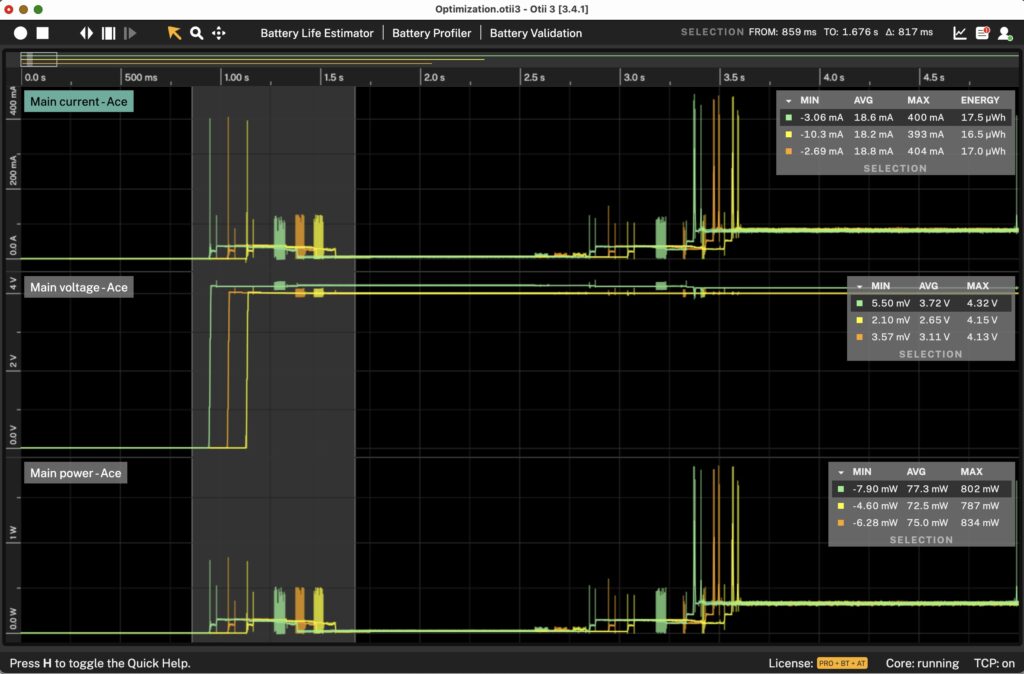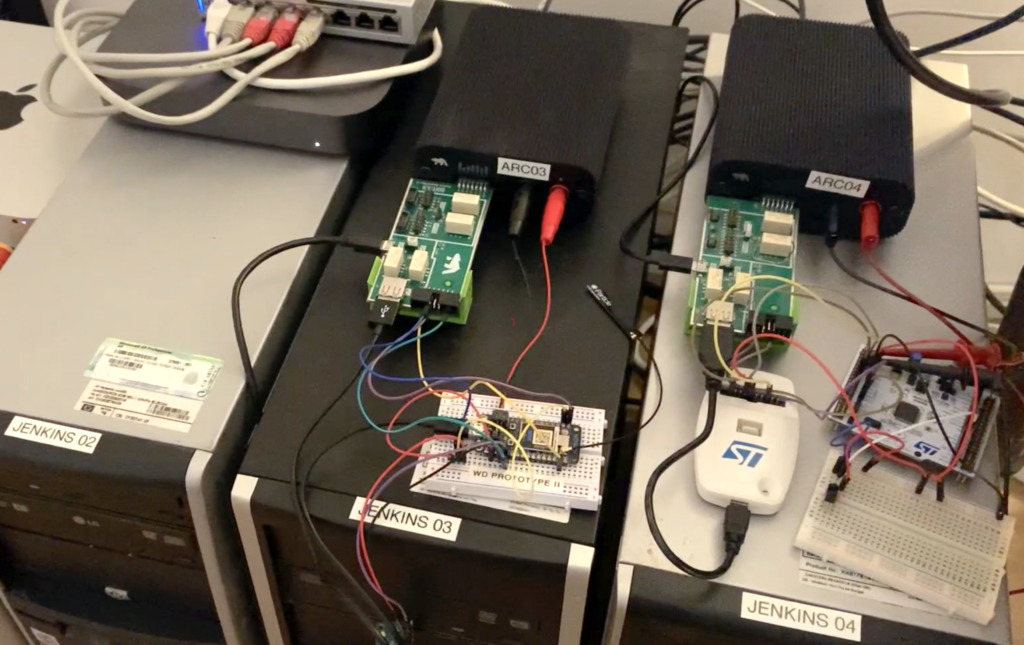Evaluating power efficiency in regression tests for embedded and IoT systems
Evaluating power efficiency in regression tests for embedded and IoT systems
The importance of power-focused regression testing
Regression testing, crucial for both hardware and software, ensures they continue working as expected after updates or changes, such as bug fixes or hardware replacements in embedded and IoT devices. It’s vital during the product’s entire lifecycle, from development to maintenance, especially for products that evolve post-launch software updates.
This testing is key to preventing unexpected errors, efficiently resolving issues, and maintaining existing functionality, particularly regarding power efficiency. It serves as a protective measure, crucial in early problem detection and safeguarding against functionality loss due to updates.
Including power consumption in regression testing for embedded and IoT devices is crucial for optimizing battery life, enhancing performance, ensuring sustainability, managing device heat, uncovering hidden bugs, complying with industry standards, and improving user experience. It’s key to maintaining device efficiency and reliability throughout their lifecycle.
Power measurements in manual regression testing
Embracing a low-power mindset is key to enhancing power efficiency. Whether you are a hardware, firmware, or software developer, there are several steps you can take to measure power efficiency benchmarks and regression testing continuously. Integrating power efficiency testing into daily development work is essential, and some features make this a natural and easy process, including:
Combined power source and measurement unit
It’s essential to have a simple, compact, and easy-to-use setup that is suitable for both hardware and software developers. Tools like Otii Arc Pro and Otii Ace Pro, offer simple and compact solutions for powering the device under test while measuring power. Furthermore, it is easily extended to include flashing of the device.
Recording comparisons
With Otii Pro, you can easily synchronize your visualizations and compare multiple power measurement recordings, add new recordings to existing projects seamlessly, and perform extended measurements and benchmarks. Seeing results in this manner is an excellent way to evaluate the efficiency of your project.

Compare power measurements in real-time with Otii Arc/Ace Pro.
Power debugging capabilities
An increase in power consumption can often signal a bug not evident in functional tests. With Otii Arc/Ace Pro, you can synchronize UART log output with power metrics, offering detailed insights into your project’s power use and aiding in quality assurance.
UART debug logs sync with Otii power measurements
By considering these features, you can ensure that power measurement testing becomes an inherent part of your daily development work, allowing you to make your embedded and IoT development more power-efficient and ultimately more cost-effective.
Power measurements in automated regression testing
Regression testing focused on power consumption becomes even more valuable when automated. By automating this process, it improves efficiency by reducing the time and effort required for repetitive testing activities while increasing test coverage, repeatability, and consistency. In the case of battery-driven devices, it’s critical to address the multitude of variables, including hardware platforms, components, deployment environments, IoT protocols, communication layers, and the type and size of batteries in use.
With software add-ons like the Otii Automation Toolbox, manual work can be scripted and automated, providing flexibility and scalability to cover essential and corner cases that could impact battery life, both positively and negatively.
Coding plays a crucial role as even minor changes can significantly impact an application’s energy profile. Therefore, it’s vital to comprehensively test and validate the power profile before deploying software updates for battery-powered devices. Making power measurements a part of the software release quality assurance and integrating it into an existing continuous integration setup, such as Jenkins, can help prevent surprises in battery life and ensure comprehensive testing.

Summary
Including power efficiency measurements in regression testing for embedded and IoT systems is crucial. It helps optimize battery life, enables energy-aware design, enhances performance and reliability, ensures compliance with regulatory standards, and offers a realistic user experience. By investing in power efficiency measurements during regression testing, developers can deliver energy-efficient, reliable, and high-performing embedded and IoT devices, meeting the growing demand for sustainable and well-performing technologies.
Want to know more?
Do you have any questions on this topic? Contact us to learn more.
Related products
Become a member of our community
Gain access to exclusive resources, educational materials, and expert advice to enhance your knowledge and understanding of powering IoT devices and battery testing.